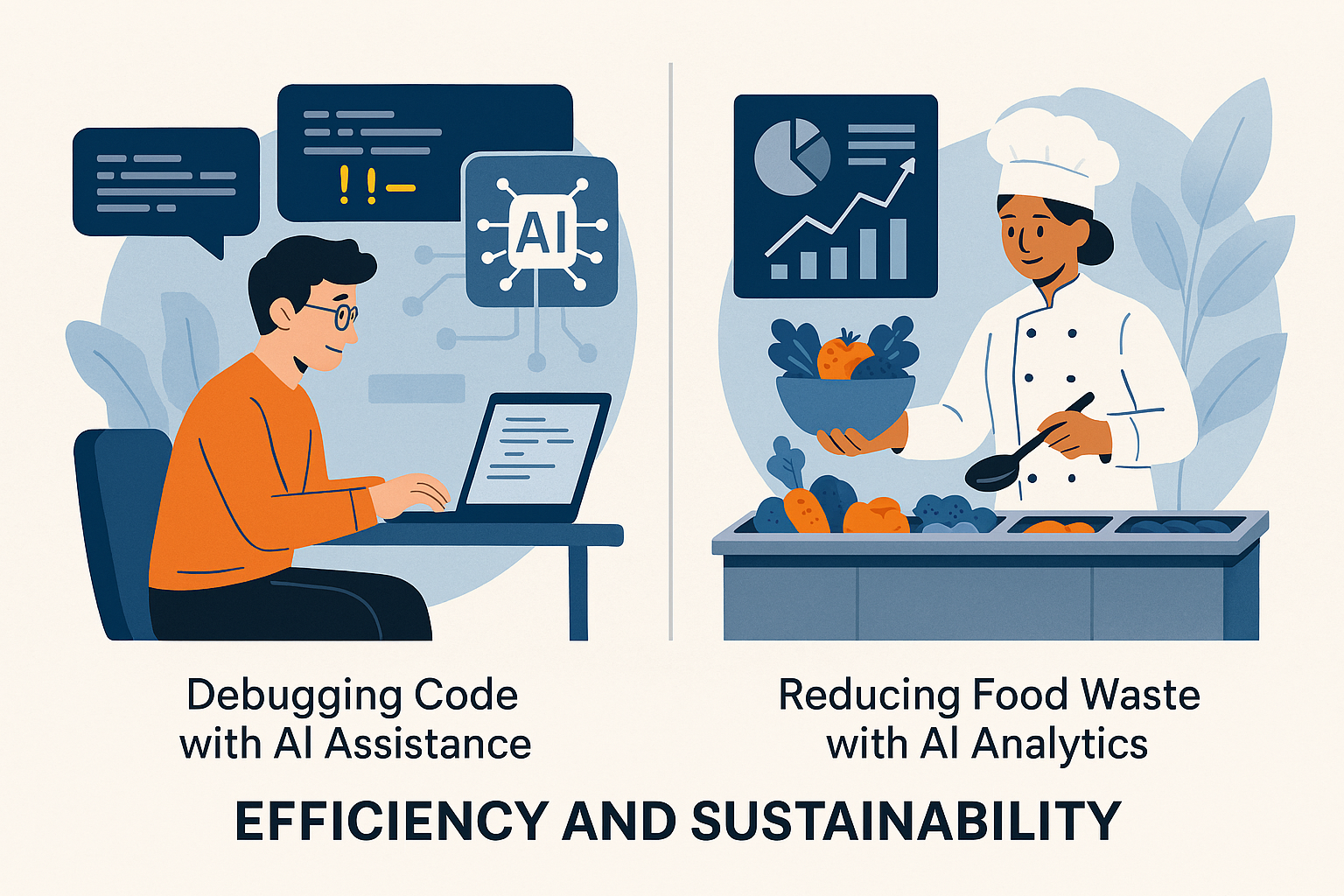From Code to Cafeteria: How Google Uses AI to Fix Bugs and Cut Waste
Introduction
Google uses AI to fix bugs and cut waste in ways that stretch far beyond traditional tech. From streamlining complex coding problems to optimizing food operations in its employee cafeterias, Google has made artificial intelligence a key driver of efficiency and sustainability. By combining advanced AI models with human expertise, the company is not only saving time and resources but also setting new standards for workplace innovation. This approach reflects a larger shift in how AI is being applied to solve both digital and real-world problems simultaneously.
AI-Driven Bug Fixing in Software Development
In software engineering, debugging is one of the most time-consuming and resource-intensive tasks. Google uses AI to fix bugs and cut waste in developer time through a range of intelligent tools.
One standout tool is an AI assistant that can analyze error reports, create a step-by-step plan for resolution, and even suggest code modifications. By automatically preparing pull requests, the AI reduces repetitive tasks while keeping developers in control of final approvals. This ensures accuracy without taking away decision-making power.
Another innovation is the use of automated bug reproduction tests. These AI-driven tests can recreate errors described in bug reports, making it easier for engineers to pinpoint root causes. With higher accuracy than traditional approaches, they significantly reduce the hours developers spend on reproducing issues.
Beyond reproducing bugs, Google has developed agentic AI systems that propose actual code patches. Some of these systems achieve high rates of generating semantically correct fixes, which means they not only patch the issue but do so in a way that aligns with the intended functionality of the program.
By integrating these AI systems, Google frees developers from repetitive problem-solving tasks and redirects their time to innovation and high-impact projects. This is a prime example of how Google uses AI to fix bugs and cut waste in its own internal operations.
Cutting Cafeteria Waste with AI Insights
While AI’s role in coding is expected, its impact on something as everyday as food waste highlights Google’s holistic approach. Google uses AI to fix bugs and cut waste not only in software but also in its cafeterias.
Chefs across Google campuses now rely on AI-powered insights to forecast meal demand more accurately. By predicting how many employees will choose certain dishes, the kitchens can better manage ingredient preparation and portion sizes. This system has led to a significant reduction in food waste per employee compared to earlier years.
AI also supports smarter menu planning. By analyzing patterns of employee preferences, seasonality of ingredients, and sustainability targets, it helps chefs design meals that minimize leftovers while still offering variety and nutrition.
Even small adjustments, such as changing bowl sizes or offering flexible serving portions, have had measurable impacts on waste reduction. Combined with AI recommendations, these strategies have resulted in major cuts to cafeteria food waste.
This shows how the same principle that allows AI to streamline lines of code can also guide practical changes in how food is served—demonstrating that efficiency can be applied in both digital and physical spaces.
Beyond Code and Cafeterias: AI Across Google’s Operations
Google’s integration of AI doesn’t stop at coding and cafeterias. The company applies intelligent tools across multiple departments, ensuring every team benefits from greater efficiency.
For instance, in human resources, AI tools are used to match candidates with job openings more effectively. By analyzing applications and job requirements, these systems reduce the manual workload of recruiters while improving hiring accuracy.
In sales, AI supports proposal creation, increasing the rate at which teams complete high-quality pitches. By handling repetitive drafting and formatting tasks, AI helps sales professionals focus on strategy and client relationships.
Even everyday activities like meetings are enhanced by AI. Tools that transcribe discussions and generate summaries help teams capture key points without wasting time on note-taking. This ensures that employees can spend their energy on decision-making rather than documentation.
All of these examples highlight a consistent pattern: Google uses AI to fix bugs and cut waste across every aspect of its business, whether technical, operational, or administrative.
The Broader Implications of AI for Efficiency
What makes Google’s approach unique is its willingness to treat AI as more than just a coding assistant. By recognizing that waste—whether in developer hours, food, or paperwork—is a universal business challenge, Google has applied AI as a versatile solution.
This mindset reflects a broader trend in modern organizations. Companies are beginning to see AI not as a specialized tool for isolated tasks but as a foundational layer that can enhance workflows across departments. From sustainability goals to productivity improvements, AI becomes a strategic partner in solving problems that once required entirely separate solutions.
For Google, this integration also reinforces its sustainability commitments. Reducing food waste aligns with environmental goals, while improving efficiency in coding and operations helps minimize energy consumption and resource use across its vast infrastructure.
Conclusion
In conclusion, Google uses AI to fix bugs and cut waste across coding, food operations, and internal workflows. Tools like automated bug reproduction agents and code-patching systems are transforming how developers approach debugging, saving time and reducing mental strain. At the same time, AI is helping cafeterias minimize food waste through smarter forecasting and menu planning. Other teams, from HR to sales, also benefit from AI systems that streamline repetitive tasks.
By applying AI both to technical and everyday challenges, Google demonstrates the true versatility of artificial intelligence. The company shows that AI is not just about automation but about creating smarter, leaner, and more sustainable practices. This integrated use of AI sets a powerful example for other organizations looking to combine innovation with efficiency—proving that technology can solve problems in code and in the cafeteria alike.




Comments are closed